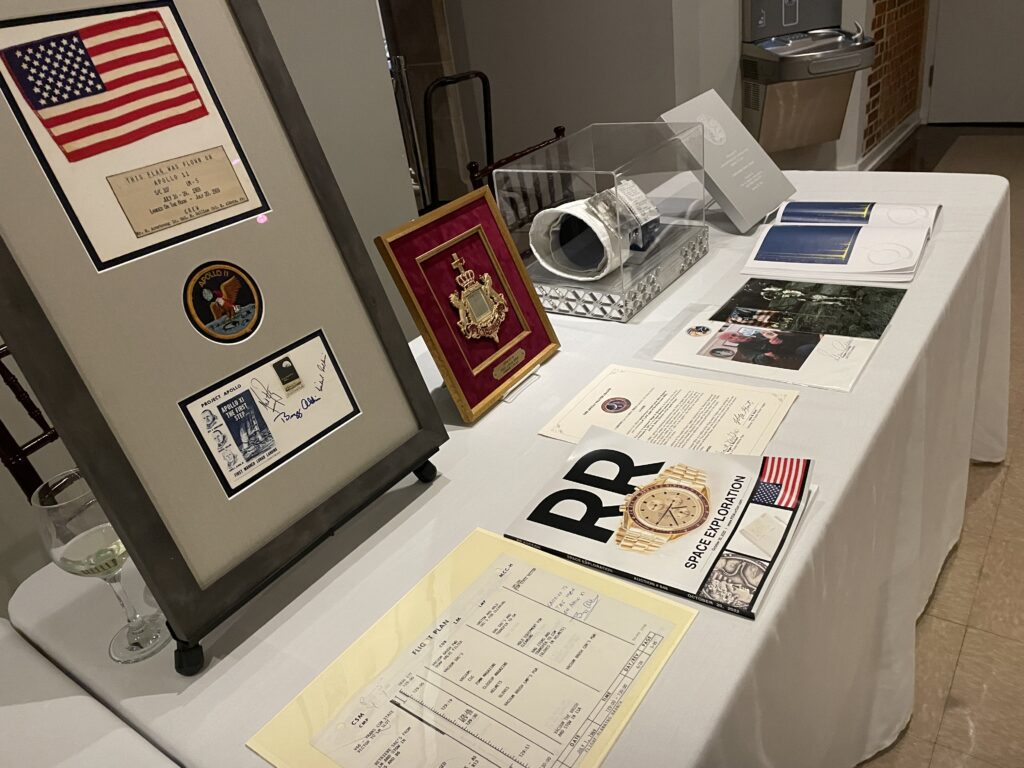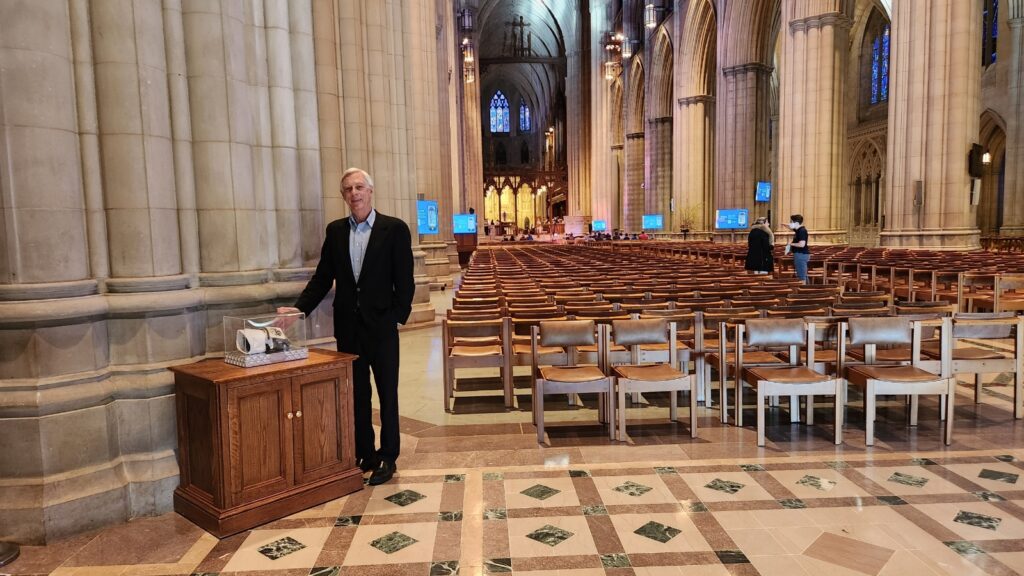A marvelous adventure began with a call from Bobby Livingston, Executive Vice President at RR Auction.
“Randolph Hollerith, the Dean of the National Cathedral is a former classmate of mine from St. Stephen’s in Alexandria, Virginia. The Rice Alumni Association is sponsoring a talk by Dr. Douglas Brinkley, who wrote the book ‘American Moonshot: John F. Kennedy and the Great Space Race.’ The Rice event is headed by another classmate of mine, Ted Adams.”
Adams knew that Bobby had a lot of connections with people who collect space program artifacts, and asked if he might be able to contact someone to bring something related to the program to the event that night.

When Bobby called me, I was thrilled at the opportunity to meet Dr. Brinkley, and also to see the world-famous National Cathedral. I said I would bring the Apollo 17 cuff checklist that Gene Cernan wore for 7 hours, 12 minutes on the lunar surface, on December 11, 1972. The checklist still has streaks of lunar dust on the pages, and so we would be bringing a bit of the moon itself to the event that night.
As we drove up to the National Cathedral, it was still late afternoon. The structure seemed to glow in the fading sunlight, and the size and beauty was even more impressive than any photos I had seen.

We were welcomed by Dean Hollerith and Ted Adams, as the Rice alumni arrived. Unscheduled, Hollerith surprisingly offered to personally escort us to the roofline of the cathedral. As we made our way through inner-access doors, we found ourselves in an aged space above the vaulted ceiling of the inner cathedral. On the walls, we saw dusty wine bottles that looked like they had been there for ages, and Deacon Hollerith explained that while the cathedral was being built over a period of some 83 years, the workers would have wine with their meals, and started putting the wine bottles in the niches of the inner walls that we were now seeing. The building of any cathedral is a multi-generational work, and looking at the bottles I imagined the chatter of the workers, fathers with sons, perhaps, even grandfathers with sons, working to build the great cathedral.

As we stepped through a small door that led to a narrow path between the roof and the parapet walls, we were treated to the sunset view of the Washington, D.C. skyline, with both the Washington Monument and the Jefferson Memorial clearly visible in the distance.
Back inside as nightfall started, we took our places as Dr. Brinkley took the podium. Even though I have been a collector and fan of the Apollo program for many years, there were many fascinating details of the program that were a delight to hear for the first time from Dr. Brinkley.

After the presentation, Rice Alumni gathered again in a reception area where we had set up the Apollo 17 checklist in its custom-made display, along with some other artifacts, including a page from the Apollo 11 landing checklist, and a Bible carried to the moon on the Apollo 14 mission.
Being in the National Cathedral with the Apollo 17 checklist was also particularly special because I knew that the Cathedral had a renowned “space window”, a stained glass window that holds an actual piece of lunar rock gathered by Neil Armstrong and Buzz Aldrin on the lunar surface, and then personally presented by all three Apollo 11 astronauts in a special ceremony at the Cathedral on July 21, 1974.

It was a very special moment when I opened the display case of the glove and checklist, and invited Dr. Brinkley to try it on, and to know that he was then wearing some lunar dust in the National Cathedral where another part of the moon was above us, embedded in the window, sealed in a nitrogen capsule, for the ages to come.
It was indeed a marvelous adventure that night, to see the grandeur of the National Cathedral, and to share the excitement and wonder of the lunar exploration artifacts that we had brought that night to share with the Rice alumni and Dr. Brinkley.
I’ve been honored to associate with RR Auction over many years now, and am so very grateful to them and Bobby Livingston for making it all possible!

We’re seeking space consignments!
Got any flown artifacts? medallions? NASA autographs? Reach out to us!


